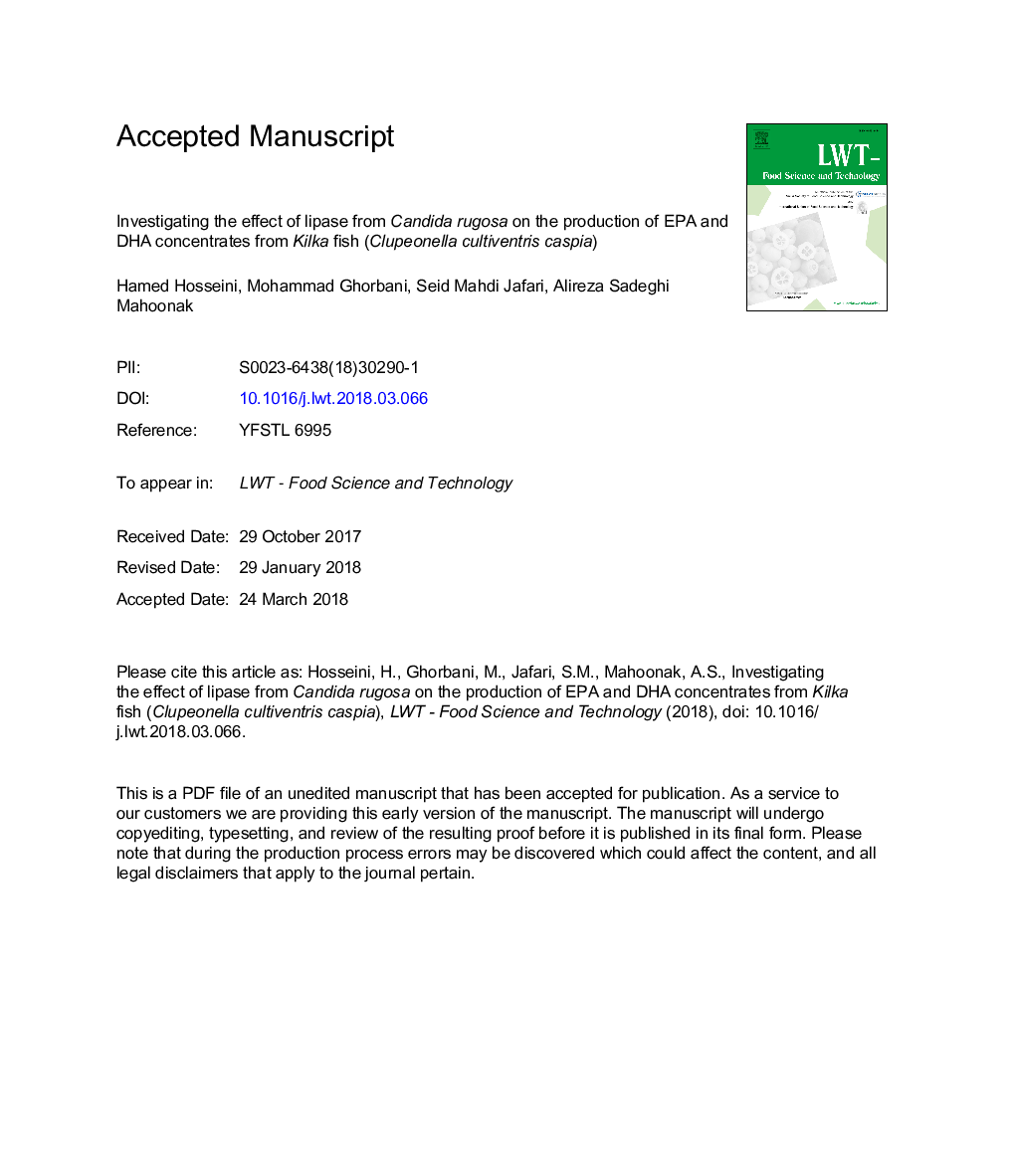| Article ID | Journal | Published Year | Pages | File Type |
|---|---|---|---|---|
| 8891077 | LWT - Food Science and Technology | 2018 | 29 Pages |
Abstract
Candida rugosa lipase (CRL) was used to concentrate n-3 polyunsaturated fatty acids (PUFA) by removing non n-3 PUFA from glycerol backbone of triacylglycerol (TAG) in Kilka fish oil. The acidity value of the reaction mixture was inversely proportional to the concentrated glyceride yield, with a correlation coefficient (R2) ranging from 0.82 to 0.98. Releasing the fatty acids from TAGs was significantly (Pâ¯<â¯0.05) increased by decrease in water-to-oil ratio from 3 to 1, or by increasing the amount of enzyme (0.50-2%) over 3â¯h of reaction time. The lipase preference for the constituent fatty acids was in the decreasing order: palmitoleic acidâ¯>â¯oleic acidâ¯â¥â¯palmitic acidâ¯>â¯stearic acidâ¯>â¯EPAâ¯>â¯DHA. The discrimination of CRL against eicosapentaenoic acid (EPA) plus docosahexaenoic acid (DHA) was significantly reduced throughout the reaction time (0-180â¯min). According to full factorial optimization results, the maximum recovery levels of DHA (72.10%) and EPA (33.60%), as well as minimum recovery levels of SFA (22.49%) and MUFA (18.62%) in the glyceride product were obtained through a condition comprising water-to-oil ratio of 1, 2% enzyme and 1â¯h, which were considered as optimum conditions.
Related Topics
Life Sciences
Agricultural and Biological Sciences
Food Science
Authors
Hamed Hosseini, Mohammad Ghorbani, Seid Mahdi Jafari, Alireza Sadeghi Mahoonak,
